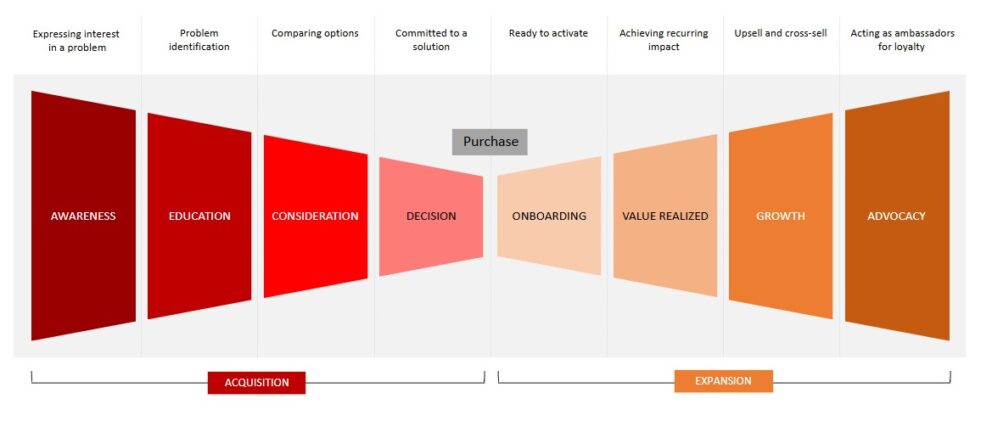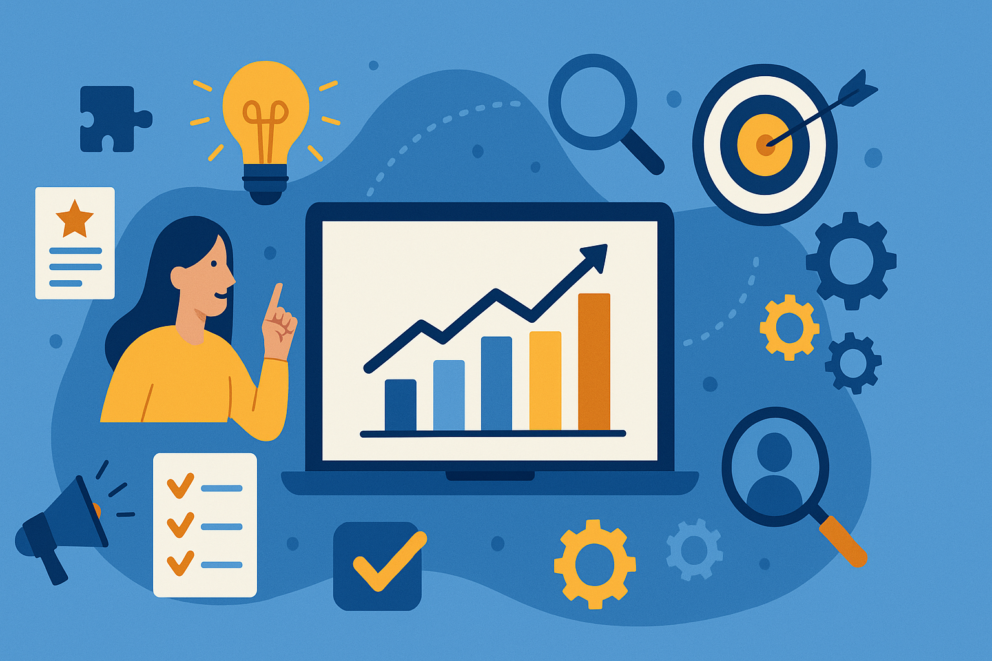B2B Marketing Metrics – They are a Changin’!

By Maria Geokezas, VP of Client Services at Heinz Marketing
As someone who has been immersed in marketing for more years than I care to admit, I love metrics. I love how they make marketing strategies more effective, but also how they enable market leaders to make better business decisions like budgeting and where to invest to gain a better ROI.
And I love metrics because they continue to evolve and improve, as Salesforce’s new State of Marketing report demonstrates. This year’s report highlights how marketers are reprioritizing how they evaluate their marketing and sales efforts.
Specifically, I am excited about how the way we evaluate customer data has evolved, meaning the metrics we pay attention to, and how metrics and KPIs will continue to evolve in the future.
Managers would do well to download and study the report to help them understand which metrics to focus on to make better business decisions. For now, I offer my summary of the information and insights below.
Marketing Metrics that Matter
As the report says, “Marketing Is Spelled D-A-T-A.” Marketers must have data to meet consumer expectations for relevant, personalized content that’s seamless no matter where or how the consumer is engaging with the brand. According to the report, 78% of marketers say their customer engagement is data driven. And marketers expect to draw on more data sources as soon as next year:
- B2C marketers expect to go from 9 data sources this year to 12 in 2022.
- B2B marketers expect to go from 12 data sources this year to 15 in 2022.
What are those sources? They are changing. Some old tools are being phased out. For example, Apple and Google are restricting third-party cookies, and marketers must comply with privacy laws, such as the very strict GDPR. But that’s okay, because marketing technology has improved to not only make up the difference but also help us tell a deeper story about leads and customers. We are able to glean much more direct information about customers from our new sources.
What are these sources? According to the Salesforce report, digital identities such as email addresses and social IDs are now the most popular customer data sources. Second-party data and inferred interests or preferences have also moved up the list and are relied upon more now than before.
Do Your Metrics Need a Review?
In light of these changes, marketers should review which metrics they are paying attention to, to ensure they are using the metrics that matter most, and to find new data sources.
Consider the simple opens and clicks as metrics. These are essentially “vanity metrics.” Because they’re easy to track, they’re a great way to help you look good. However, they don’t help you understand what’s helping you accomplish anything meaningful.
In addition, soft metrics such as likes, follows, views and impressions are metrics that should be looked at, but not considered all that relevant in light of a marketer’s efforts to move someone along the funnel from prospect to customer—and then ideally to loyal customer.
Metrics Through the Funnel
At the very least, a marketer’s focus should be on metrics that allow you to track through the whole sales funnel. Tracking throughout the funnel allows you to see exactly where successes and problems are occurring through the process. That means you can track exactly what brought in leads and turned those leads into deals, so you can replicate those results.
On the other hand, if your opens and clicks are increasing, but you aren’t getting any new sales, tracking through the funnel can tell you exactly where prospects are dropping off…so you can do something about it.
The benefits of seeing where customers are dropping off are obvious, but it’s deeper than that. The customer funnel also helps you understand the ROI of specific projects or improvements. It can aid with budgeting. It can also help you better partner with sales, and even start your organization on the profitable path to sales and marketing alignment.
For marketers who pursue more relevant metrics, a sales funnel can later be supplemented by a predictable pipeline—which also aids in achieving sales and marketing alignment.
Managing the Data that Make the Metrics
At this point, you might be wondering how you’ll be able to easily track the metrics that matter, adapt your sales funnel to track and use those metrics, and implement a predictable pipeline—while juggling ever increasing amounts of data.
The answer might be a Customer Data Platform (CDP). According to the Salesforce report, 78% of high performers use a CDP, which pulls data from multiple sources but delivers a single (and accurate) customer profile.
Metrics on the Move
Not only have metrics and data sources evolved and increased. So too have KPIs. This is in part due to the pandemic, but it was also inevitable as marketing has begun to play a bigger, more integral and strategic role within the business. Rather than act as an independent unit as in the past, 70% of CMOs now align their KPIs with those of their CEOs, according to the report. (And it’s worth noting that that means a surprising 30% still don’t.)
And so, KPIs continue to evolve.
Marketers continue to stay focused on the obvious metrics of revenue and funnel performance, as they should. Now, however, with 78% of marketing organizations changing or reprioritizing metrics due to the pandemic, marketers are paying much more attention to KPIs, especially real time KPIs. According to Salesforce, the most valuable KPIs are now:
- Customer satisfaction metrics
- Revenue
- Marketing/sales funnel
- Content engagement
- Customer lifetime value
Marketers will always need metrics to measure performance, refine processes and more. This new report from Salesforce emphasizes the need for such metrics, but also the fluid nature of metrics and KPIs as marketing itself continues to evolve into a strategic part of the business as a whole. Those marketers who stay on top of the changes, adapt new technologies to capture and use new data sources, and strive for sales and marketing alignment are the marketers who will help to keep their organizations both relevant and responsive in an ever-changing world.





